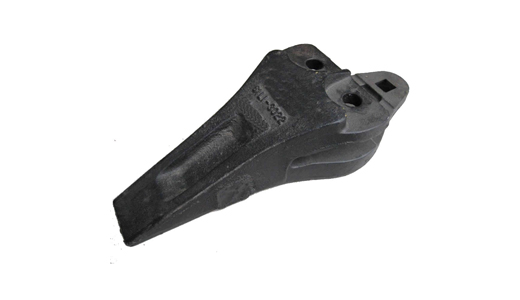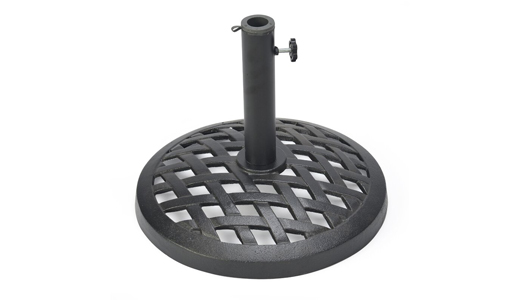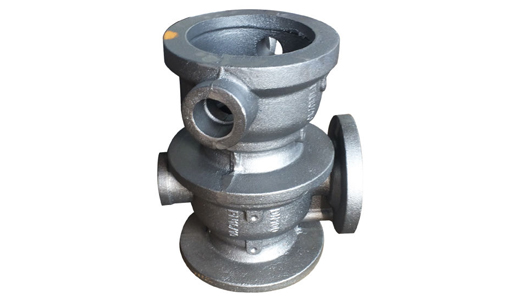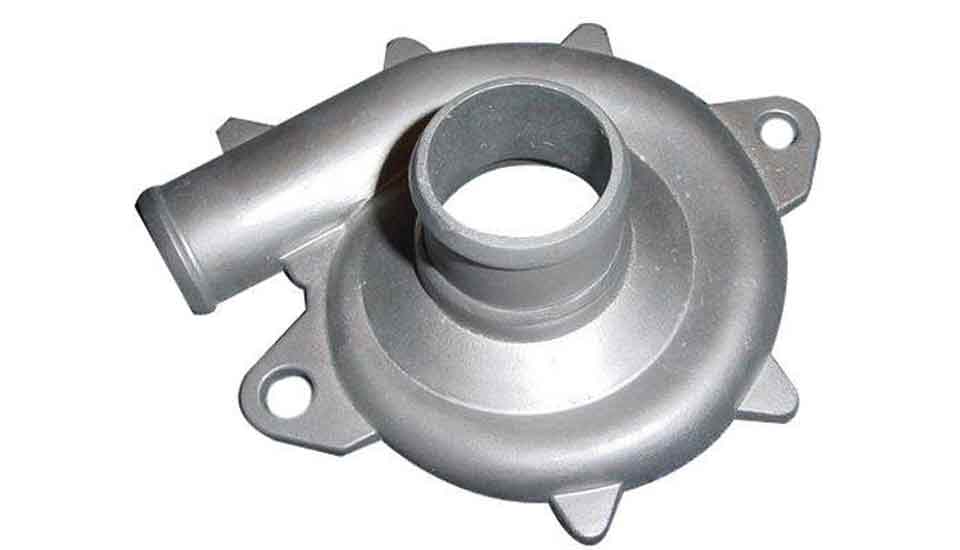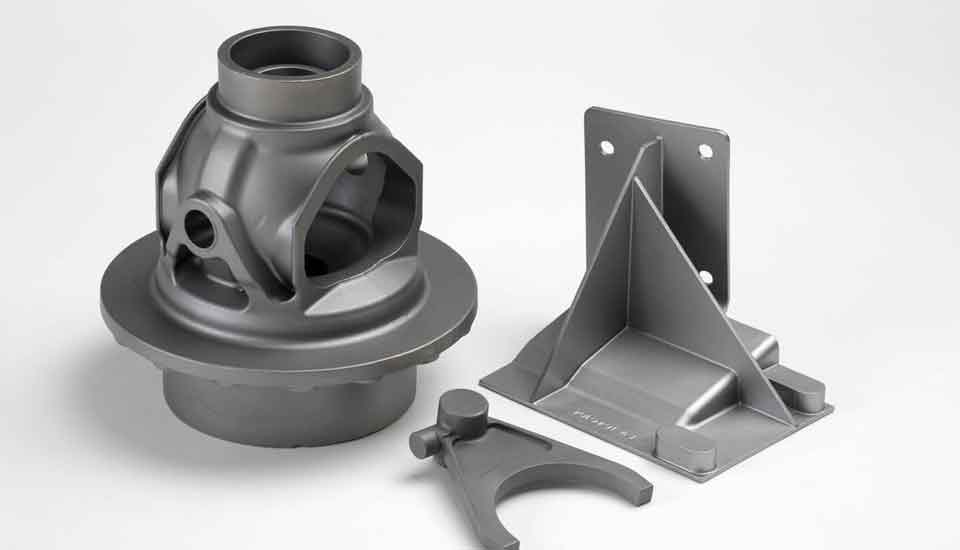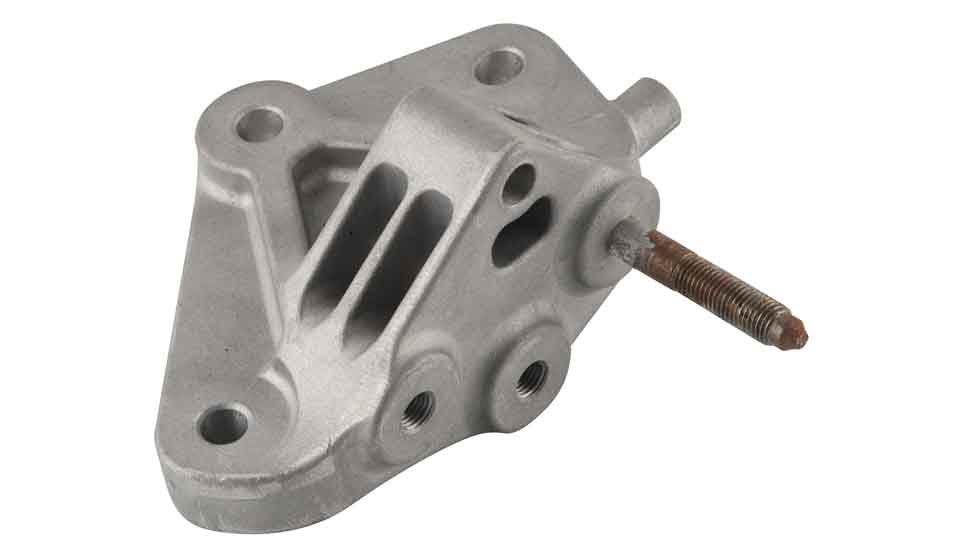Sand casting means the main material consisting of the mold is sand, and the melted metal fills the casting cavity only by its gravity. Generally, this method of making the casting products is so-called sand casting. There are several different kinds of sand applying to industrial casting production. The most common types are green sand, resin sand, and sodium silicate. However, green sand accounts for overwhelming usage on the iron casting product. Because of the cheap price, it is very suitable to make the middle and oversized part. If the part is not high demanding on property and specification, green sand mold casting is the ideal option.
The green sand mold casting is made by a mixture of sand, clay, water, and a few additional materials. Among them, the sand is the fire-resisting aggregate. Clay plays the role of adhesive when melted with water. The other additional materials are to improving the casting performances.
Basic Green Sand Mold Casting Process
The basic green sand mold casting process involves only simple steps. Starts with the preparation of mold, pouring molten metal into the sand mold, and remove the sand to release a casting product. But in order to get a good green sand mold casting product, a number of key parameters such as compression strength, permeability. The temperature of the pouring metal shall be controlled and applied correctly and accurately. Furthermore, according to the study and experience accumulation by our engineer, there are other factors that were found to be also important, such as grain size, and composition, fluidity, pouring time, cooling time, humidity, etc.
Categories of Green Sand Casting
Green sand casting can be categorized into 3 different types: dry green sand casting, surface-dried green sand casting, and wet green sand casting. As these names indicate, the mold is respectively in the state of dry, surface-dry, and all wet before the metal pouring process carrying on. Ray Force, the professional sand casting factory, provides high quality green sand casting for sale.
The dry green sand casting
Usually using the big-sized sand, and applying the coatings to ensure the quality of the casting. This technic gives the mold better air permeability and a nice strength after heating, thus reduces the casting defects such as sand cut, sand stick, and air hole, etc. This method is mainly used to produce the big, oversized part. But this technic requires specific heating equipment for the mold, it needs a long production cycle, higher energy consumption, un-friendly working space, low accurate casting level it yields as it is. So in the up-to-date casting foundry, this dry green sand casting technic has been abandoned.
The surface-dry sand casting
Before the metal pouring process, this technic is to heat the mold to create a solid and dry surface (15~20mm). These dry surface features meet both dry and wet sand casting requirements. The sand usually is quartz size in 12/30, 20/40, and 30/50 as well, combined with activated bentonite works as adhesives. Also, a coating layer is required to reduce the sand stick during casting. Comparing with the dry green sand casting method, this surface-dry sand casting technic does not need complete heating equipment, the energy and electricity consumption are much lower, it has a shorter production cycle, easy to remove the sand after casting, and a better working environment for the workers. But it needs to be handled more carefully and requires strict operation according to the instruction.
The wet green sand casting
The advantages of wet green sand casting are quite obvious. Without the heating process, directly the mold is able to do the pouring process, which means a great cost and time reduction for the production cycle. It gives a better quality casting part, the whole automatic production line could be applied by this technic, the working space is cleaner and better as well. But the downside of wet green sand casting is there also, the main problem is the low strength of mold, more moisture containing, more air created during the pouring process, so the defects such as eye hole, air hole, slag inclusions must be controlled by specific casting operations, it much relies on the engineer and workers experiences.
The mold for the wet green sand casting is made by sand, clay, coal powder, water, occasionally add heavy oil, residual oil, and so on. The aggregate is quartz, size around 50/100, 70/140, or 100/200, the smaller size and is used to the small-sized casting part while the bigger size sand is for bigger casting part. In certain situations, 2 different sizes of sand were both used to achieve better-wet strength, higher ability to resist the sand stick, and crack defects.
 English
English 
